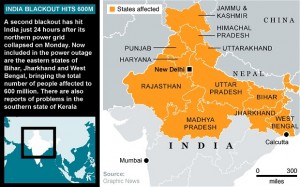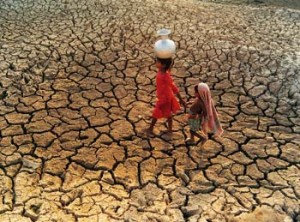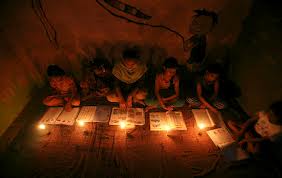Imagine if half of the US were without power. The country would come to a complete standstill. Some people would be able to travel and those with  generators would be fine, but work and the economy would slow to a halt. Now imagine the entire US population was without power; then double that. That’s what happened in India on July 31st and continued for two days with back-to-back power failures when 600-700 million Indians were left without power in the world’s largest blackout. Life came to a halt as people were trapped in traffic jams and on trains or stayed at home without power; while the country’s economy was handicapped by low productivity and increased business expenses. Something of this scale happening in the US would be unbelievable given our reliable power sources; but in a developing country like India that suffers from severe poverty, this is unprecedented and has wider implications.
generators would be fine, but work and the economy would slow to a halt. Now imagine the entire US population was without power; then double that. That’s what happened in India on July 31st and continued for two days with back-to-back power failures when 600-700 million Indians were left without power in the world’s largest blackout. Life came to a halt as people were trapped in traffic jams and on trains or stayed at home without power; while the country’s economy was handicapped by low productivity and increased business expenses. Something of this scale happening in the US would be unbelievable given our reliable power sources; but in a developing country like India that suffers from severe poverty, this is unprecedented and has wider implications.
Blackouts in India (and other developing countries), unfortunately, aren’t unusual. But, what makes this blackout so unique is the underlying factors related to climate change. To start, India’s electrical power system is shoddy at best and is in high demand by people and businesses, adding further strain to an already weak system. Couple this with a major drought caused by delayed monsoons this year (which are believed to be a side-effect of global warming), and you have a serious demand from a very large country that needs to be kept cool. Some are concerned that India’s increasingly erratic monsoon rains, rains which many crops depend on, will raise global food prices as crops fail from drought (India is one of the leading producers of sugar and grains). What does this mean? Higher food prices, resulting in greater food insecurity. A potentially unfortunate downside of climate change for much of the world.
This incident is just another example of how the growing reliance on electricity and power are unsustainable at the rate and through the methods (inefficient coal production) that developing countries are using it. What’s most concerning is that developing countries are still heavily reliant on the burning of fossil fuels for energy, a major contributor to carbon dioxide in our atmosphere that helped cause global warming in the first place. The countries that had a primary role in causing global warming (ahem, the US) are developed countries that now have the ability and resources to start switching to more sustainable energy sources, but may not be doing as much as emerging economies like China and India. Unfortunately other developing countries that don’t benefit from the growing economies and large populations that these countries do likely don’t yet have the ability for large-scale investment in renewable energies, although they are rich with these alternatives resources.
So, how do we solve these complex problems? How do we shift developing countries to more sustainable, low-carbon energy sources? The answers to these questions are so complex and large-scale that they are beyond my reach. But I do know that solutions will have to take place at the local, national and international-levels. It will take the lowering of subsidies on fuels to allow developing countries, with weaker economies, to be able to purchase. It will take support from other, stronger, countries in aiding in and supporting change within India’s government and economy. For India, they will need a stronger, non-corrupt local and national government committed to better infrastructure. The millions of Indians living in abject poverty will have to be raised out of poverty so that they may be productive members of the economy.
I’ve said this before with other environmental issues I’ve covered, but it looks like we’re witnessing how climate change will affect our lives. This blackout is a perfect example of how hard developing countries will be affected, likely disproportionately more than developed countries. Maybe this will be a wakeup call to developing countries with emerging economies to strengthen their energy infrastructure and begin moving towards more sustainable and reliable energy sources. But, maybe it won’t. Leading developed countries, like the US, know some of the changes that need to be made (although not all) and must take the lead on becoming role-models among all countries for switching to sustainable energy while supporting the change in developing countries.




